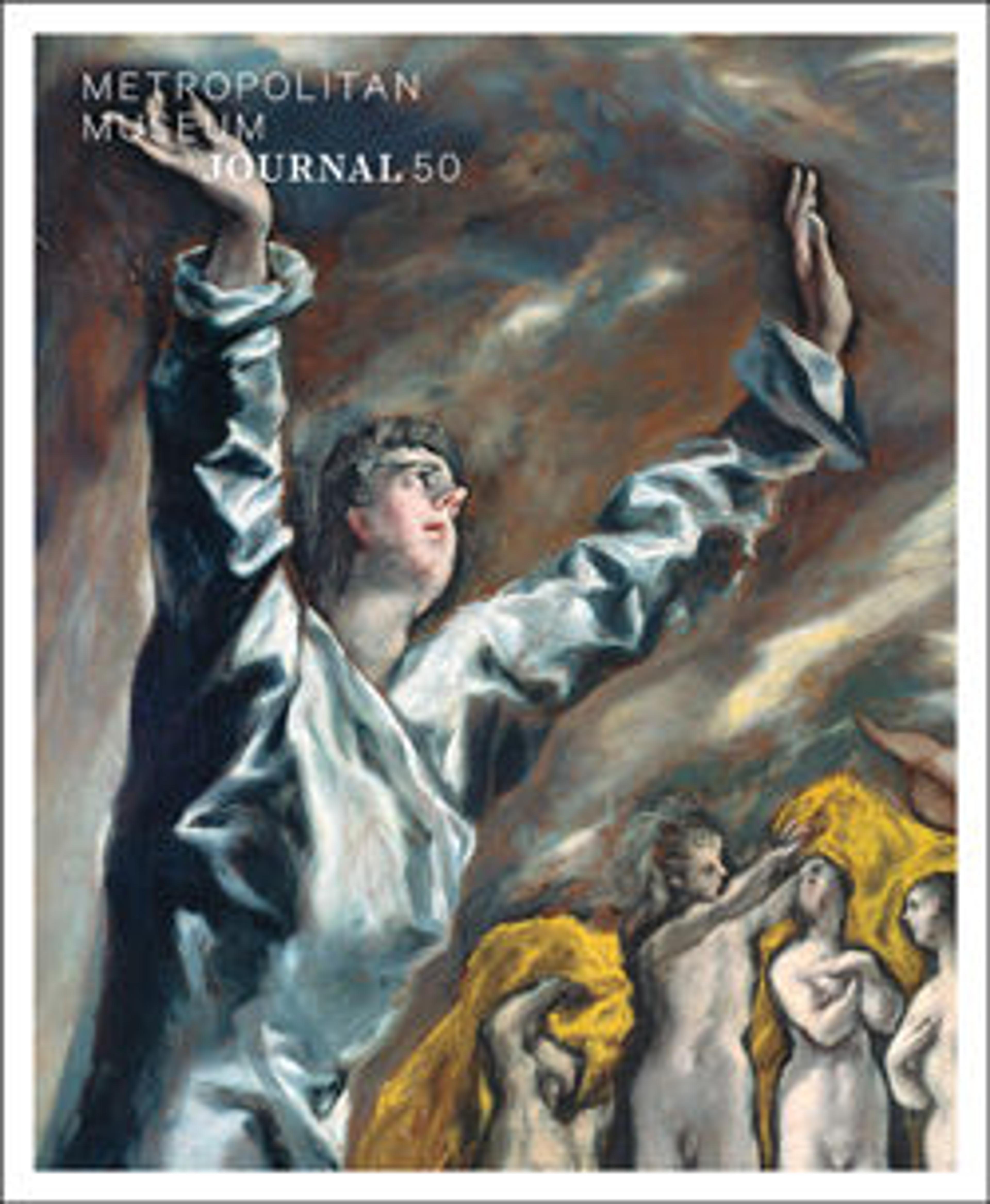Terracotta loutrophoros (ceremonial vase for water)
On the body, above, obverse, male deity adjudicating between Persephone and Aphrodite regarding Adonis; reverse, seated youth and woman with three women
Below, all around, youth at a stele (grave marker) between youths and women
On the shoulder, obverse and reverse, head of a woman
On the lid, head of a woman
The Tarentine predilection for disciplined yet exuberant embellishment is applied here to an imposing vase with deeply serious iconography. In the primary scene, Persephone and Aphrodite, who both laid claim to the beautiful hunter Adonis, await a judgment from the deity seated between them. He may be interpreted as Zeus or as Hades, ruler of the Underworld. Differing versions of the verdict allowed the hero to divide his time between the goddesses. In the zone below, a youth is isolated between a grave monument and a laver as figures approach from either side. The themes of death and the Underworld are complemented with luxuriant vegetation. The myth of the death and rebirth of Adonis is connected with seasonal change, and the abundant vegetation on this loutrophoros could symbolize rebirth, an appropriate theme for a funeral vase.
Below, all around, youth at a stele (grave marker) between youths and women
On the shoulder, obverse and reverse, head of a woman
On the lid, head of a woman
The Tarentine predilection for disciplined yet exuberant embellishment is applied here to an imposing vase with deeply serious iconography. In the primary scene, Persephone and Aphrodite, who both laid claim to the beautiful hunter Adonis, await a judgment from the deity seated between them. He may be interpreted as Zeus or as Hades, ruler of the Underworld. Differing versions of the verdict allowed the hero to divide his time between the goddesses. In the zone below, a youth is isolated between a grave monument and a laver as figures approach from either side. The themes of death and the Underworld are complemented with luxuriant vegetation. The myth of the death and rebirth of Adonis is connected with seasonal change, and the abundant vegetation on this loutrophoros could symbolize rebirth, an appropriate theme for a funeral vase.
Artwork Details
- Title: Terracotta loutrophoros (ceremonial vase for water)
- Artist: Attributed to the Darius Painter
- Period: Late Classical
- Date: ca. 340–330 BCE
- Culture: Greek, South Italian, Apulian
- Medium: Terracotta; red-figure
- Dimensions: H. 36 5/8 in. (93 cm)
- Classification: Vases
- Credit Line: Rogers Fund, 1911
- Object Number: 11.210.3a, b
- Curatorial Department: Greek and Roman Art
More Artwork
Research Resources
The Met provides unparalleled resources for research and welcomes an international community of students and scholars. The Met's Open Access API is where creators and researchers can connect to the The Met collection. Open Access data and public domain images are available for unrestricted commercial and noncommercial use without permission or fee.
To request images under copyright and other restrictions, please use this Image Request form.
Feedback
We continue to research and examine historical and cultural context for objects in The Met collection. If you have comments or questions about this object record, please contact us using the form below. The Museum looks forward to receiving your comments.
